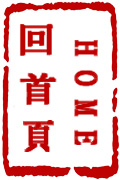
电子音乐的实践与创新
Marc Battier Masters Class For Electroacoustic Music
电子音乐是一种将声音转换成音乐的艺术。电子音乐的存在使得声音变得无穷无尽,同时,因其是有声的、数字化的,音乐创作再不需要任何声学或电子乐器,声音通过录制并转换就可以成为音乐材料。
当然,将录制的声音转化成音乐需要有多种技术手段、特定的软件及丰富的经验支撑。但,整体而言,最主要的是聆听。聆听不同的声音,了解声音所传达的讯息,并考虑如何将其转化为音乐。
65年前,发明电子音乐的音乐家皮埃尔•舍费尔将制作电子音乐的过程描述为从声音到音乐的一次旅行。他发明了许多创作电子音乐的方法。最重要的是,他教人们如何发现身边自然的声音并将它们转换成美妙的音乐。
继皮埃尔•舍费尔(Pierre SCHAEFFER)之后,其它的音乐家尝试了多种不同的电子音乐创作路径。其中就包括德国的卡尔海因茨•施托克豪森(Karlheinz STOCKHAUSEN),他对电子声音非常着迷,希望能将一些基本的电子声音制作成复杂的音乐声音。此外,还有罗伯特•穆格(Robert MOOG),他发明了电子合成器。还有如约翰•乔宁(John CHOWNING)等许多音乐家都为电子音乐的发展发挥了推动作用。
今天,电子音乐在世界许多国家,可以通过多种方式得以实现,并且风格各异。比如,在中国,以张小夫(ZHANG Xiaofu)为代表的作曲家将电子音乐与中国民乐乐器很好地融合在一起制作出了混合类电子音乐这种音乐形式。
Start Time: 2014年4月17日/0:00
End Time: 2014年4月22日/0:00
城市/City: 上海/Shanghai
地点/Venue:
主办/Sponsor
主讲/Lecturer
交互传译/Interpreter
筹办/Organizer
关键词/Keywords
信息/Message
发表信息(预先注册)/Add message on this lecture(members ONLY)